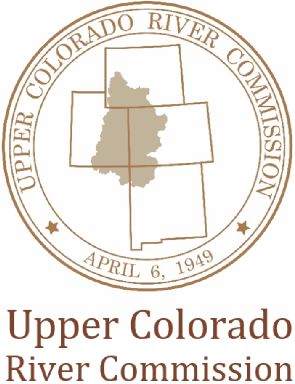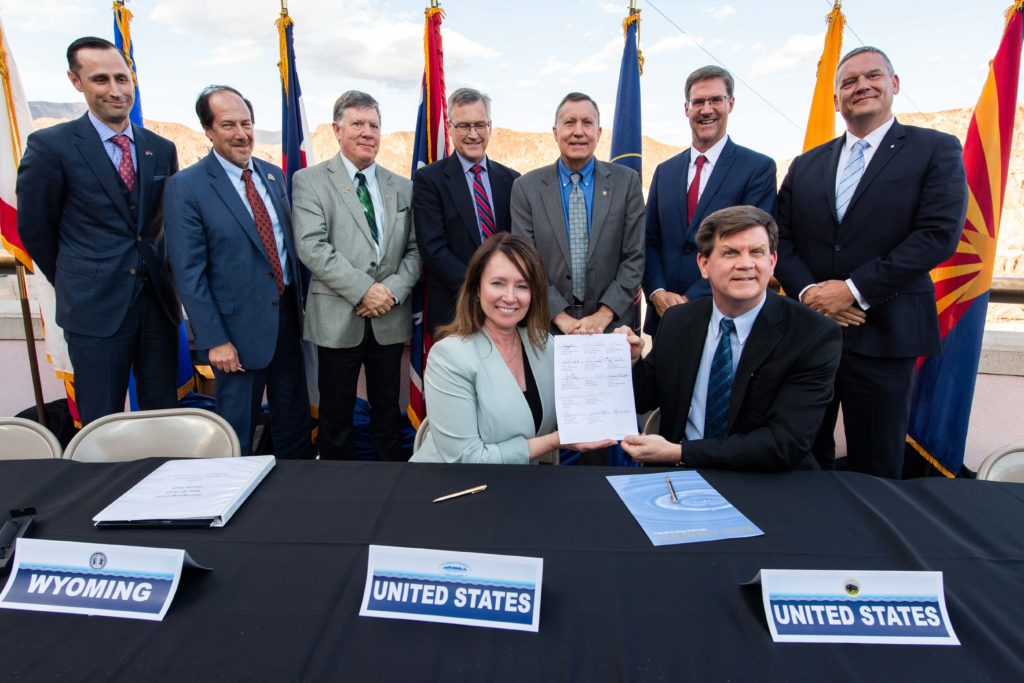COLORADO RIVER DROUGHT CONTINGENCY PLANNING
On May 20, 2019, the interstate Drought Contingency Plans (DCPs) agreements were signed and became effective for both the Upper and Lower Colorado River basins. The DCPs are designed to reduce risks to the Colorado River from ongoing historic drought exacerbated by the effects of climate change.
The Upper Basin DCP (consisting of the Drought Response Operations Agreement and the Demand Management Storage Agreement) marks the culmination of intensive efforts dating back to 2014 (December 10, 2014 Resolution) by the Upper Colorado River Commission, key Commission advisors and staff, to address fluctuating water elevations and low storage conditions at Colorado River reservoirs, particularly Lakes Powell and Mead. The Upper Basin DCP is designed to: 1) protect critical elevations at Lake Powell and help ensure continued compliance with the 1922 Colorado River Compact; and, 2) establish the foundation for the storage of water in the Upper Basin as part of a Demand Management Program that may be developed in the future.
The Lower Division States of Arizona, California and Nevada, together with key water users in those states, developed the Lower Basin DCP (consisting of the LB Drought Contingency Plan Agreement and the LB Drought Operations Exhibit) designed to contribute additional water to Lake Mead at predetermined elevations and to incentivize additional voluntary conservation of water to be stored at Lake Mead.
Both the Upper and Lower Basin executed an agreement to “link” various aspects of the Upper and Lower Basin DCPs.

